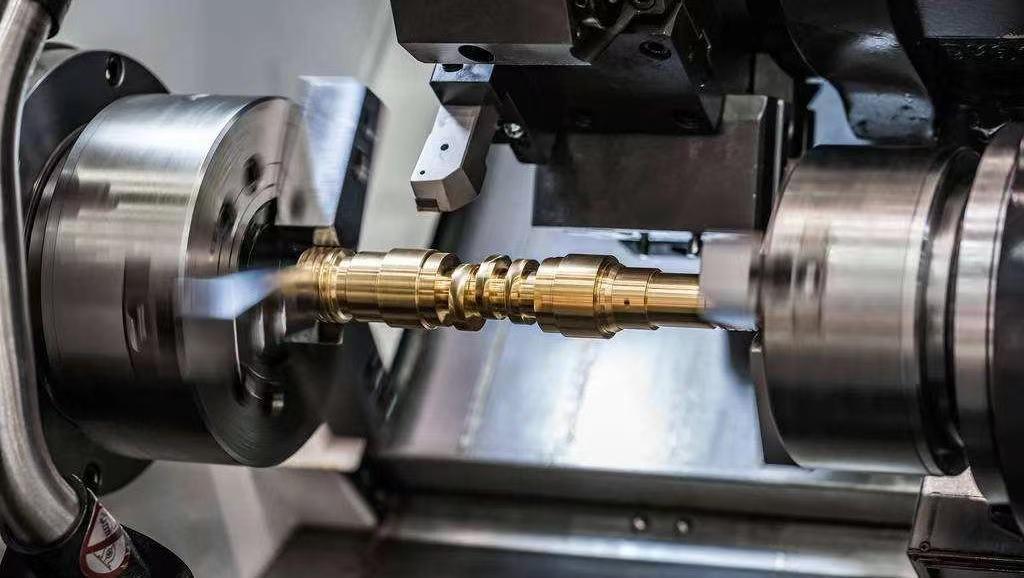What is CNC Milling?
CNC milling is a machining process that utilizes computerized controls to manage the movement and operation of multi-point rotary cutting tools. As the tools rotate and move across the surface of the workpiece, they slowly remove excess material to achieve the desired shape and size.
The rotation and movement of the cutting tool depend on the CNC milling machine type and level of sophistication. The process is highly versatile and compatible with various materials such as aluminum, plastics, wood, and glass.
CNC milled parts have high tolerance as milling machines can achieve a tolerance between +/- 0.001 in. to +/- 0.005 in (some machines can achieve a tolerance of +/- 0.0005 in).
The CNC milling process can be broken up into four distinct stages:
- CAD model design: engineers create a 2D or 3D design of the desired part
- CAD model conversion to a CNC program: the design is exported into a compatible file format and converted into machine instructions using CAM software
- CNC milling machine setup: the machine operator prepares the machine and workpiece
- Milling operation execution: the machine operator initiates the machining program
The systems used in CNC milling operations are known as CNC milling machines. They can have a moving workpiece and a stationary rotary tool, a stationary workpiece and a moving rotary tool, or a moving workpiece and rotary tool, depending on their design and the milling requirements. As CNC milling generally serves as a secondary or finishing process for machined components, milling machines can be used to create design elements such as flat surfaces, contours, grooves, slots, notches, holes, and pockets.
CNC milling accommodates a variety of materials, including metals, plastics, ceramics, and other engineered materials, making it easy for manufacturers to choose a material that suits their exact needs. This material flexibility benefits a number of industries, including, but not limited to, the following:
- Aerospace and aircraft
- Automotive
- Commercial
- Electronics
- Industrial and OEM
- Maintenance
- Medical
- Technology and security
- Telecommunications
- Transportation
Advantages and Disadvantages of CNC Milling in the Production Process
The process is an important part of many industrial production processes due to its advantages. Nevertheless, it also has its disadvantages. Below are a few advantages and disadvantages of the process.
Advantages:
· Accuracy and Precision
CNC milling machines have higher accuracy and precision. Therefore, they can create parts according to their technical specification. As a result, they can mill parts with tolerances as tight as 0.0004. Also, being an automated process reduces the chances of human errors.
· Fast and Efficient
Compared to conventional millers, CNC millers are fast and efficient. This is a result of their ability to carry many cutting tools (depending on the ATC), which aids effective tool-changing and efficient processes.
· Large Compatible Material
The process is compatible with many compatible materials, e.g., plastic, composites, and metals. Therefore, CNC milling might be the perfect process once you have a block of material.
Disadvantages:
· Material Wastage
The process is subtractive, i.e., material removal occurs to form the desired part. Therefore, compared to other manufacturing methods such as 3D printing services, there is much material wastage.
· High Level of Maintenance
CNC millers require a high level of maintenance to keep them functioning well. The machine is expensive. Therefore, maintenance is important.
Post time: Dec-15-2022







